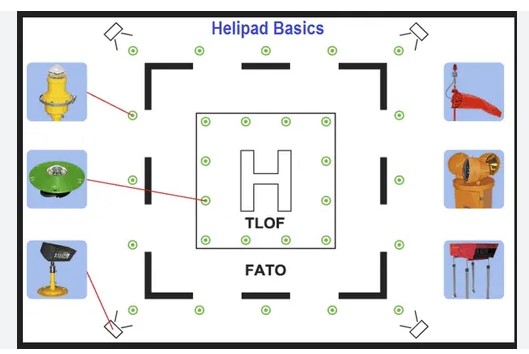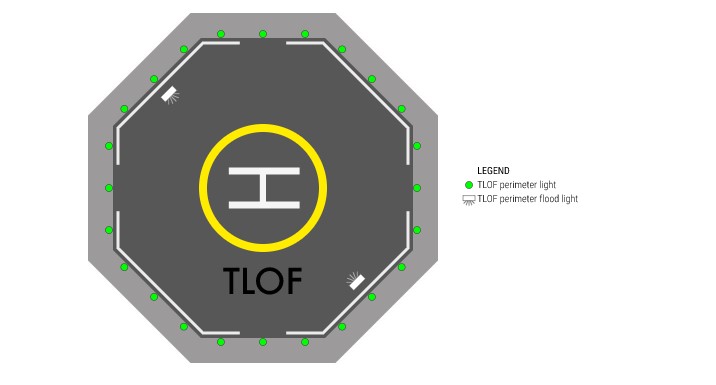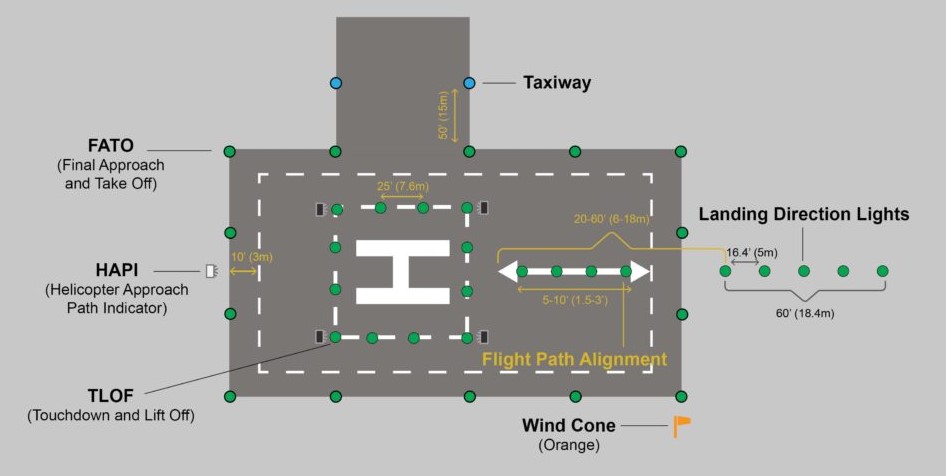Heliport lighting systems configurations

Heliport lighting generally consists of lights installed in a circle or square between the TLOF (touchdown and lift-off area) surface and another around the entire landing area, i.e. the FATO (final approach and take-off area). The FATO is usually defined as a square area and also encloses the TLOF. In turn, the FATO is contained within a square (or free) area, the SAFETY ZONE.
The lights between the FATO and TLOF must be green (ICAO and FAA regulations) and can be inset or elevated. The previous standard called for the use of a yellow (amber) light instead, a colour which is still preferred in many places. Furthermore, there are many color variations, and these depend on the heliport¡¯s ownership and jurisdiction.

The helidecks on ships are ¡°elevated heliports¡± characterised by very limited spaces (The FATO coincides with the TLOF). Actually, there is no definitive ¡°most efficient configuration¡± for helidecks on ships: it is more about considering the different aspects and being able to propose, on a case by case basis, the ¡°right¡± layout. The helidecks on ships lighting usually comprises:
• A heliport beacon should be provided wherever long-range visibility is deemed necessary.
• Floodlights are required to illuminate the TLOF (touchdown and lift-off area). The lights must be positioned in such a way as to not dazzle the pilots or personnel working in the area.
• TLOF lights must be inset and must be positioned along the edges of the TLOF. The lights must be evenly spaced at an interval not exceeding 3 metres. There should be a minimum of 14 lights.
